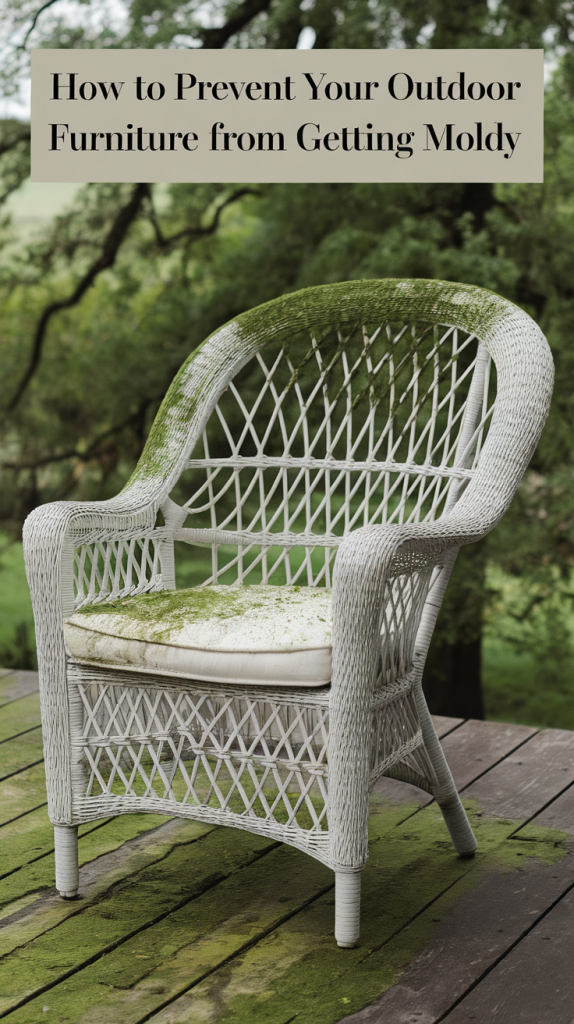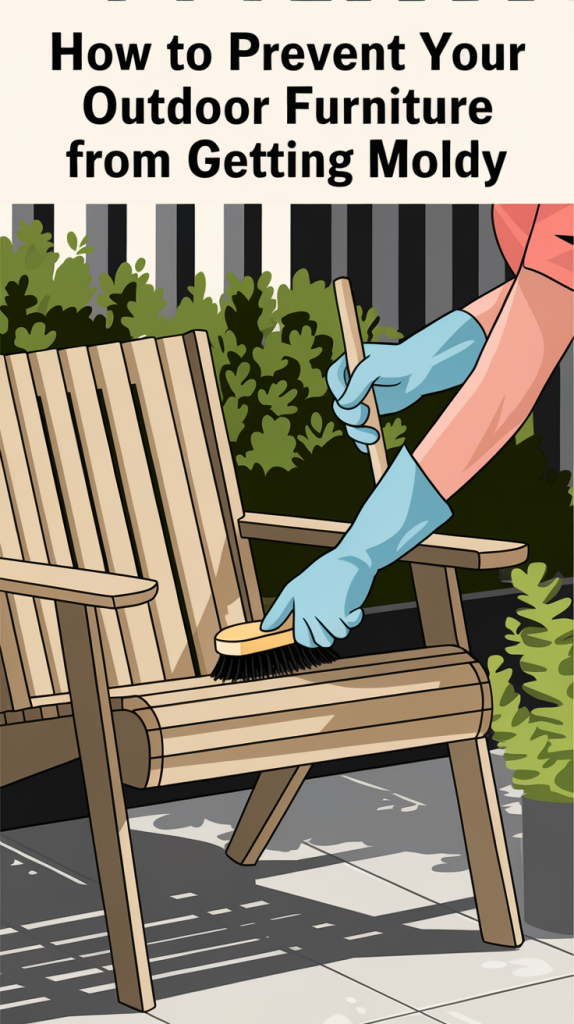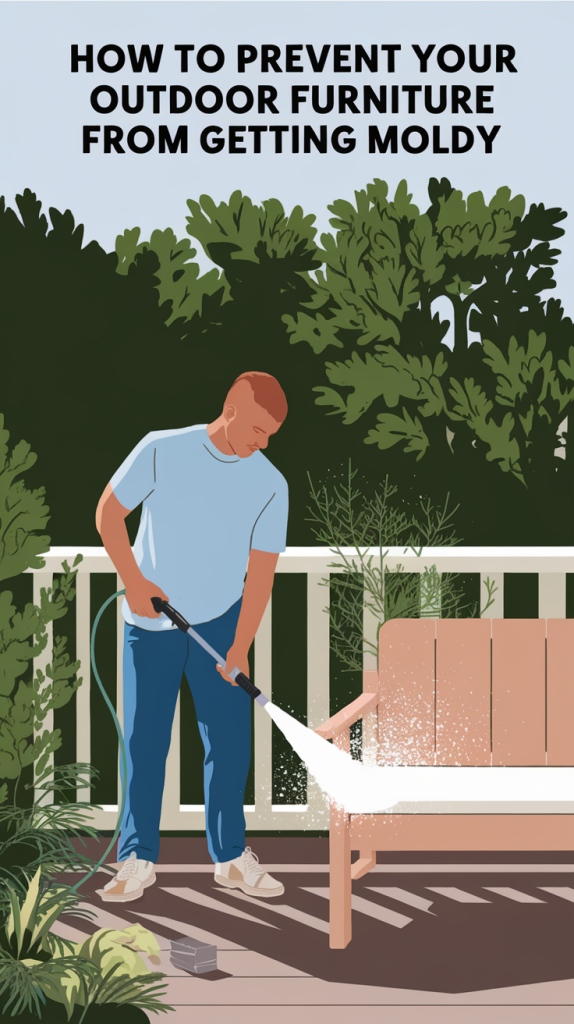How to Prevent Outdoor Furniture from Getting Moldy in 2025: Expert Tips That Work

The summer humidity levels in Florida Mississippi and Louisiana reach more than 80 percent. The high prevalence of outdoor furniture mold infections leads homeowners to fight this issue daily. Fortunately mold is not an unavoidable problem. Your patio can remain clean with fresh appearance throughout every part of the year.
The guide explains cost-effective and effective methods that protect outdoor furniture regardless of your residential space size from Brooklyn to Texas. The guide examines various subjects such as material selection and maintenance procedures alongside storage techniques combined with upcoming mold-fighting equipment that gain popularity nationwide.

Who Is This Article For?
The information in this text serves owners as well as lessees and short-term housing providers seeking to resolve their distaste for outdoor mold viewing and odor. The experts are ready to present their methods, which will solve your problems regarding stinky cushions and wet wooden seating.
Why Does Mold Grow on Outdoor Furniture?
Mold and mildew thrive in regions with warm temperatures and high humidity. Sadly, this is true for roughly half of the country during the spring and summer seasons.
These are the possible culprits behind the outdoor mold growth on your furniture:
- Prolonged exposure to moisture from rain, dew, sprinklers, or humidification vents
- Airflow obstructions under the covers or tight spaces on the patio
- Absorbent materials such as untreated wood and polyester cushions
- Lack of protective coating and routine cleaning
Even if your furniture looks dry, the materials may retain hidden moisture. And once mold takes hold, it spreads fast—discoloring surfaces, releasing allergens, and compromising its structural integrity.
👉 If you have seen the ‘musty patch’ on your outdoor seat and have lifted the cushion many times, you are not alone.

Which Furniture Materials Are Most Prone to Mold?
The success of any project largely depends on sufficient understanding of materials used. Let’s break it down:
Wooden Furniture: Naturally Beautiful, Mold’s Best Friend
- Untreated wood has a tendency to easily absorb moisture, but teak, cedar, and eucalyptus are better at resisting it.
- Mold commonly manifests as black or green blemishes in the cracks and crevices.
Fabric Cushions: Traps for Moisture
- The possibility of mold grows exponentially if wet on cushions made with polyester blends or those that have foam interiors.
- Even labels claiming to be water-repellent and UV-resistant do not guarantee they are mold-proof.
Metal and Plastic: Lower Risk, But Not Immune
- While aluminum and resin wicker are more resistant to rust, they can still accumulate spores in certain areas.
- Water tends to accumulate under the furniture, which encourages mold growth.
📊 Table: Mold Resistance by Material Type
| Material | Mold Resistance | Maintenance Level | Common Issue |
|---|---|---|---|
| Teak Wood | Medium | Moderate | Black mildew spots |
| Treated Plastic | High | Low | Dirt + pollen buildup |
| Metal (Aluminum) | Medium-High | Low-Moderate | Under-seat rust mold |
| Polyester Fabric | Low | High | Inner foam mold |
The Biggest Mistakes That Invite Mold
It’s not just the rain that causes issues—it’s the behavior. Here are some of the areas where people tend to go wrong:
- Falling asleep while it’s raining
- Using waterproof covers with no airflow
- Stowing damp furniture in a shed or garage
- Failing to use sealants or mold resistant sprays
- Forgetting to leave some space between covers when stacking furniture
👉 Mold has a fondness for hiding, so when did you last take a look at the underside of your patio chairs?

How to Protect Your Furniture from Mold
Now, let’s talk real solutions—proactive steps you can take to stop mold before it even starts.
Use Mold-Resistant Sprays and Sealants
Products like Thompson’s WaterSeal, Rust-Oleum NeverWet, or Scotchgard Outdoor Fabric Protector can create an invisible shield over wood, fabric, and even metal.
Recommended Application:
- Clean surfaces thoroughly
- Apply spray in a well-ventilated area
- Let dry for at least 24 hours before use
Pro Tip: Reapply every 3–6 months, especially in humid climates.
Invest in Ventilated Furniture Covers
Forget heavy-duty tarps that trap moisture. Look for UV-protected, breathable covers with vent flaps. Great brands available in the U.S. include:
- Duck Covers (widely available on Amazon or Home Depot)
- Classic Accessories Veranda Series
- SunPatio or Vailge Waterproof Covers
Make sure to get the right size for a snug (not tight) fit. Loose covers can blow away; tight covers breed mold.
Monthly Mold Prevention Routine
A little monthly care goes a long way:
🧽 10-Minute Checklist:
- Brush off pollen, leaves, and dirt
- Spot-clean any visible mold with white vinegar + water (1:1 ratio)
- Let cushions dry completely in the sun
- Flip and rotate furniture monthly
🌱 Bonus: Add a few drops of tea tree or eucalyptus oil to your spray for a natural antifungal boost.
How to Store Outdoor Furniture the Right Way
Smart storage can significantly impact operations during off-season or impending storms.
Ideal Storage Spots
- Covered patios or sheds with airflow
- Garages with dehumidifiers
- Stackable furniture sets with room for air circulation
- Portable tent storage units (great for small yards)
Pre-Storage Prep
- Wash and dry everything thoroughly
- Apply protective sprays
- Store cushions in airtight bins with moisture absorbers
- Leave air gaps between items to prevent condensation
👉 No storage space? Consider foldable furniture, modular sets, or renting a storage pod.
Mold-Fighting Technologies to Watch in 2025
New materials and innovations are changing the game for outdoor living:
🌟 Trending in the U.S. Market:
- Anti-microbial fabrics with infused silver or copper
- Self-cleaning sealants that repel dirt and spores
- Smart patio cushions with moisture sensors (coming soon!)
- Eco-friendly mold sprays made with biodegradable compounds
Big-box retailers like Lowe’s, Costco, and Target are now offering outdoor sets built with mold-resistant tech from day one.
Summary: 5 Keys to Keep Mold Off Your Patio in 2025
- Choose the right materials: Go for mold-resistant fabrics and treated woods
- Clean and dry furniture regularly—especially after rain
- Use breathable covers, not suffocating tarps
- Apply protective sprays every few months
- Store wisely during storms or winter months

